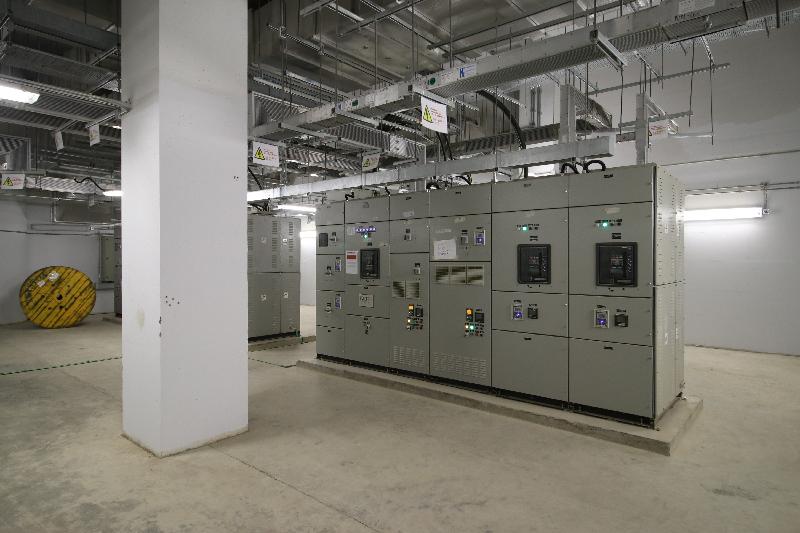HyD’s response to media enquiries on water leakage at basement of Passenger Clearance Building of Hong Kong-Zhuhai-Macao Bridge Hong Kong Port (with photos)
Regarding media enquiries made yesterday (July 2) on a news report about water leakage previously found at the basement of the Passenger Clearance Building (PCB) at the Hong Kong Port (HKP) of the Hong Kong-Zhuhai-Macao Bridge (HZMB), the Highways Department (HyD) today (July 3) responded as follows:
The basement of the PCB at the HKP of the HZMB does not only house the electrical and mechanical equipment for the PCB, but also accommodates the district cooling system for the HKP. The district cooling system supplies chilled sea water via underground conduits to the air conditioning systems of the building cluster in the vehicle clearance plaza, so as to achieve the energy saving objective. Therefore, it is a reasonable arrangement to house the plant room of the PCB at its basement.
Soon after the contractor and the HyD’s resident site staff discovered the leakage problem at the PCB in early 2018, they had swiftly followed up the issue and arranged rectification works. According to the records kept by the resident site staff of the consultant appointed by the HyD, after the structural and fitting-out works of the PCB were completed, some underground cable ducts had not been sealed up timely after cable installation, thus leading to leakage of rainwater into the basement via these ducts on April 15, 2018. The contractor had subsequently rectified the problem by properly sealing up the relevant ducts. After recent rainstorms, including the amber rainstorm yesterday (July 2), the HyD has not observed any noticeable water leakage during site inspections at the basement of the PCB.
As regards the news report about smoke emission from the pillar box, the incident occurred on June 20, 2018 according to the records. During testing and commissioning for the PCB, the resident site staff found that there had been smoke emission from the pillar box of the air conditioning system. The incident was believed to have been caused by malfunctioning of a component, leading to over-heating of the equipment and subsequently smoke emission. The contractor has completed the rectification works for the malfunctioned component and the system is currently in normal operation. The HyD emphasised that this incident of smoke emission from the pillar box and the earlier water leakage incident at the basement are two independent incidents which are completely unrelated to each other.
The PCB is undergoing testing and commissioning at present. The HyD will strictly conduct the testing and commissioning with a view to ensuring that the works would only pass the acceptance procedures if their qualities meet the required standards.
For the present conditions inside the PCB basement, please refer to the photographs attached.







